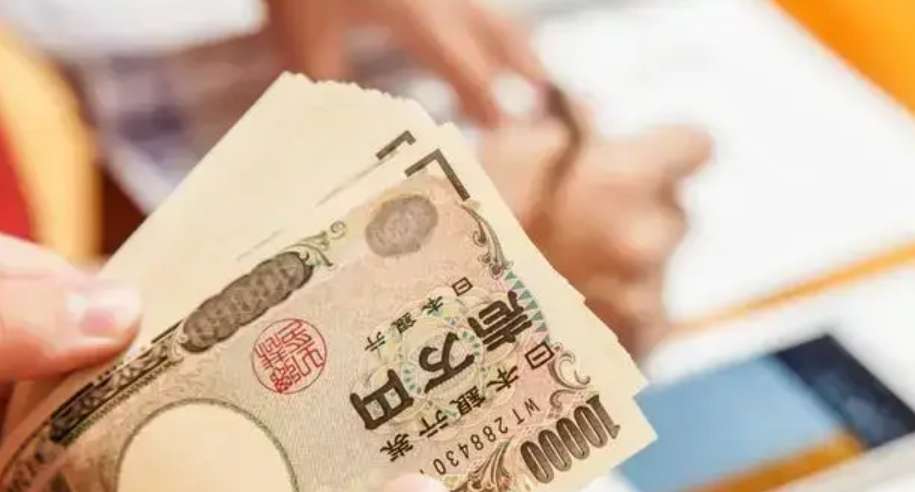BOJ Rate Hike: Confidence or Uncertainty?
Advertisements
Japan's economy has recently revealed a surprising resilience,defying forecasts with robust growth propelled by increased corporate spending and favorable net trade dynamics.This noteworthy performance has paved the way for the Bank of Japan (BoJ) to consider advancing its interest rate hike agenda.
New data released by Japan's Cabinet Office indicates that the country's Gross Domestic Product (GDP) grew at an annualized rate of 2.8% in the fourth quarter of last year.This figure marks a significant increase from the previously revised growth rate of 1.7% in the preceding quarter and considerably exceeds the market’s anticipated growth of just 1.1%.Such data paints a positive picture of Japan’s economic landscape.
However,while the numbers illustrate a steady economic advancement,they also hint at underlying vulnerabilities.The uptick in net exports,for instance,was partly fueled by a decrease in imports,raising concerns over the health of domestic demand.This implies that although the economy is expanding,it may not be as vigorous as the headline figures suggest.
Private consumption,which plays a crucial role in the Japanese economy,showed only a slight increase over expectations but contrasted sharply with a more pronounced slowdown compared to the previous quarter.Alarmingly,when viewed on an annual basis,the value of private consumption in 2024 remains lower than levels recorded a decade ago.This trend raises a question of sustainability and long-term economic health.
Nonetheless,the overall economic growth could bolster the confidence of Central Bank officials,prompting a continued search for opportunities to incrementally unwind the extraordinarily accommodative monetary policy that has shaped Japan's economic environment in recent years.Economist Yuichi Kodama from Meiji Institute highlighted that despite a marked slowdown in personal consumption and inflationary pressures—which are inextricably linked to stagnating real wage growth—Japan’s economy is still on an upward trajectory,suggesting that the BoJ may persist with its rate hike plans.
Taro Kimura,a senior economist with Bloomberg Economics,echoed similar sentiments,stating that the resilience in consumption and investment indicates that the BoJ's policy adjustments have not significantly burdened the private sector.Such assessments are crucial as they provide context for the central bank's decision-making process in a landscape of evolving economic indicators.
Looking ahead,revisions to the GDP figures are anticipated in March,just approximately a week before the BoJ convenes for its next policy-setting meeting.Most economists project that the central bank will not consider another rate hike until the summer,signifying a cautious approach in the face of fluctuating economic conditions.Following the release of the recent data,the Japanese yen showed signs of appreciation,additional evidence of market optimism.
Concurrently,Prime Minister Shigeru Ishiba is grappling with the challenges posed by inflation,launching a series of price-subsidy initiatives as part of a broader economic stimulus strategy.His minority government engages in negotiations with smaller opposition parties to increase the income tax exemption amount and incorporate free high school education into the new fiscal budget scheduled to commence in April.Such measures might serve to bolster support among voters amid rising price pressures.
Furthermore,a part of the GDP growth attributed to net exports is due to a decline in imports,which has been closely tied to falling energy prices.Notably,a modest rebound in exports can be credited to robust spending from inbound tourists,categorized as service exports, accentuating the importance of the tourism sector in the economic recovery narrative.
accentuating the importance of the tourism sector in the economic recovery narrative.
Nevertheless,with U.S.President Biden issuing threats to impose tariffs against trade partners,Japan's trade outlook lends itself to increased uncertainty.In the midst of such global economic challenges,the Ishiba administration must rely on its economic initiatives to sustain growth in the coming months.The Japanese government is currently working to decipher the specifics of the proposed reciprocal tariff measures and is seeking exemptions for steel and aluminum products to safeguard national interests.
Economist Kazuki Fujimoto from the Japan Research Institute offered insights into the export landscape by noting that although the outlook for commodity exports remains murky,service exports,especially those driven by inbound demand,are likely to continue seeing growth,albeit at a potentially moderated pace.Overall,Fujimoto believes that exports are headed in a positive direction,which is essential for fostering a balanced economic recovery.
The promising data from the fourth quarter has raised Japan's full-year growth rate for 2024 to an unexpected 0.1%,counteracting predictions of a contraction.For the first time,nominal GDP has also surpassed 600 trillion yen,achieving a target set nearly a decade ago by former Prime Minister Shinzo Abe.Yet,this modest growth remains the smallest since the pandemic’s onset,casting shadows on the capacity for a more robust economic revival.
Furthermore,the depreciation of the yen has significantly diminished the dollar-value of Japanese goods and services,impacting Japan's standing in the global economic hierarchy.Currently,Japan ranks as the fourth-largest economy globally,trailing behind the United States,China,and Germany.Observers anticipate India may surpass Japan in the coming years,underscoring the potential shift in economic power dynamics.Last year,the yen fell more than 10% against the dollar,despite continuous interventions by Japanese authorities in foreign exchange markets to stabilize the currency,revealing the daunting challenges facing Japan's economic policymakers.
Categories
Latest Post
- DeepSeek: Shaking up State-Owned Assets
- Federal Reserve Interest Rate Decision
- Alternative Investments: A New Path to Wealth
- Special Bond Land Deals Speed Up
- Countdown to Australia's Interest Rate Cut?
- Tech Giants Battle for AI Chip Dominance
- Bank of Japan Raises Interest Rates
- Analysis of U.S. Stock Market Trends
- New Trends in the AI Industry
- Challenges in the AI Chip Industry